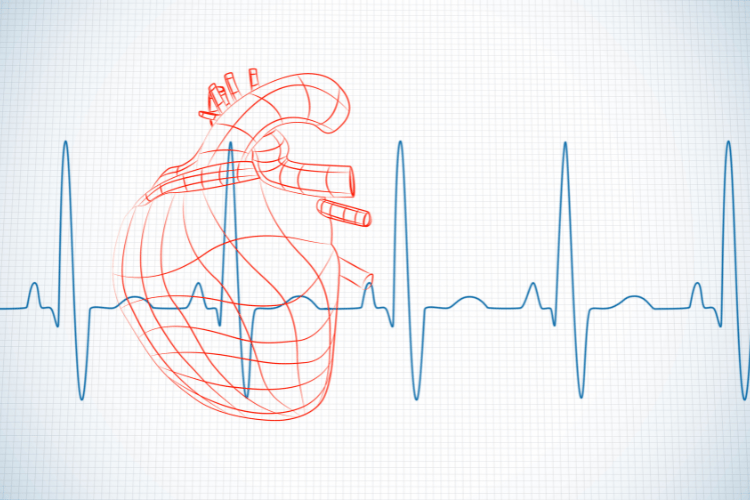
Pulse and heart rate are often used interchangeably, but they aren’t exactly the same. While both measure the activity of your heart, they serve slightly different purposes in understanding your cardiovascular health. In this blog, we’ll explain the differences between pulse and heart rate, how they are measured, and why they are important for monitoring your overall well-being.
Understanding Heart Rate and Pulse
Heart rate and pulse are two terms often used interchangeably, but they have distinct meanings and roles in understanding cardiovascular health. Both provide valuable insights into how well the heart is functioning, but they measure different aspects of the circulatory system. Knowing the differences and how to monitor them can help individuals maintain better heart health.What is Heart Rate?
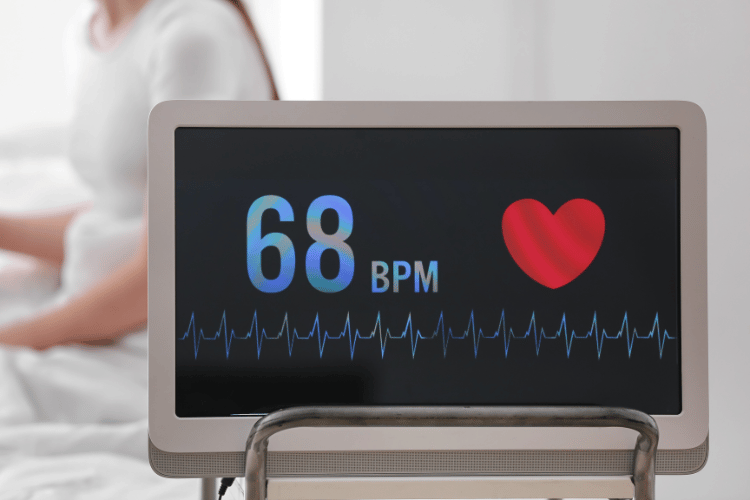 Heart rate refers to the number of times the heart beats per minute (bpm). It is a direct measure of the heart's activity, reflecting how hard it works to pump blood throughout the body. The heart rate can vary depending on factors such as physical activity, stress, emotions, and overall health.
A normal resting heart rate for adults typically ranges between 60 and 100 beats per minute (bpm). However, athletes or individuals with high cardiovascular fitness may have a lower resting heart rate, sometimes as low as 40 bpm. Heart rate can increase during exercise or stress as the body demands more oxygen and nutrients, and it can decrease during rest or sleep when the body is in a relaxed state.
Monitoring heart rate is a crucial aspect of evaluating cardiovascular health. Abnormalities, such as a consistently high heart rate (tachycardia) or low heart rate (bradycardia), may indicate underlying health issues that require medical attention.
Heart rate refers to the number of times the heart beats per minute (bpm). It is a direct measure of the heart's activity, reflecting how hard it works to pump blood throughout the body. The heart rate can vary depending on factors such as physical activity, stress, emotions, and overall health.
A normal resting heart rate for adults typically ranges between 60 and 100 beats per minute (bpm). However, athletes or individuals with high cardiovascular fitness may have a lower resting heart rate, sometimes as low as 40 bpm. Heart rate can increase during exercise or stress as the body demands more oxygen and nutrients, and it can decrease during rest or sleep when the body is in a relaxed state.
Monitoring heart rate is a crucial aspect of evaluating cardiovascular health. Abnormalities, such as a consistently high heart rate (tachycardia) or low heart rate (bradycardia), may indicate underlying health issues that require medical attention.
What is Pulse?
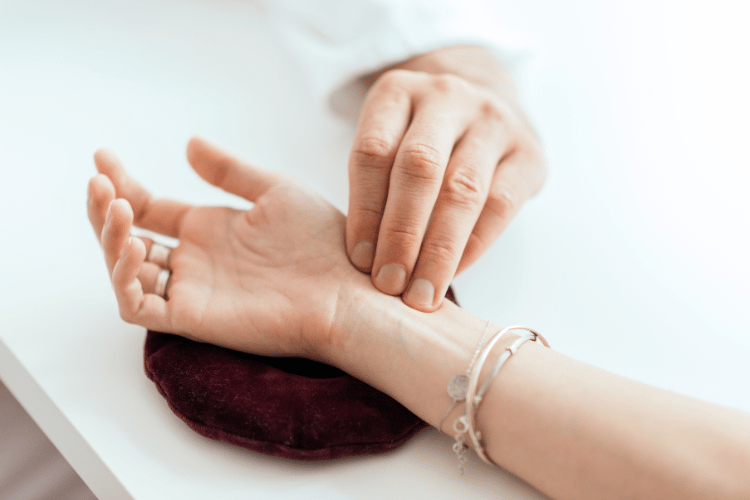 Pulse is the rhythmic expansion and contraction of arteries as blood is pumped through them by the heart. It is essentially the physical sensation of the heartbeat that can be felt at various points on the body where arteries are close to the skin, such as the wrist, neck, or ankle.
The pulse rate is often used as an indirect measure of heart rate, as each pulse corresponds to one heartbeat. However, the pulse also provides additional information about the strength and rhythm of the heartbeat. For example, a weak or irregular pulse may indicate issues with blood flow or heart function.
Checking the pulse is a simple and non-invasive way to assess heart activity. It is commonly used in both clinical and home settings to monitor heart health and detect potential problems.
Pulse is the rhythmic expansion and contraction of arteries as blood is pumped through them by the heart. It is essentially the physical sensation of the heartbeat that can be felt at various points on the body where arteries are close to the skin, such as the wrist, neck, or ankle.
The pulse rate is often used as an indirect measure of heart rate, as each pulse corresponds to one heartbeat. However, the pulse also provides additional information about the strength and rhythm of the heartbeat. For example, a weak or irregular pulse may indicate issues with blood flow or heart function.
Checking the pulse is a simple and non-invasive way to assess heart activity. It is commonly used in both clinical and home settings to monitor heart health and detect potential problems.
Differences Between Heart Rate and Pulse Rate
While heart rate and pulse rate are closely related, they are not identical. Understanding their differences can help clarify their roles in monitoring cardiovascular health:- Definition:
- Heart rate measures the number of times the heart beats per minute.
- Pulse rate measures the number of palpable beats felt in the arteries per minute.
- Measurement:
- Heart rate is typically measured using devices like electrocardiograms (ECGs), heart rate monitors, or fitness trackers.
- Pulse rate is measured manually by feeling the pulse at specific points on the body or using pulse oximeters.
- Additional Information:
- Heart rate focuses solely on the frequency of heartbeats.
- Pulse rate provides insights into the strength and rhythm of the heartbeat, in addition to its frequency.
- Discrepancies:
- In most cases, heart rate and pulse rate are the same. However, certain conditions, such as arrhythmias or poor circulation, can cause a difference between the two. For example, in atrial fibrillation, the heart may beat irregularly, leading to a mismatch between heart rate and pulse rate.
Regular Pulse and Heart Rate
Understanding what constitutes a normal pulse and heart rate is essential for monitoring cardiovascular health. While these metrics can vary from person to person, certain ranges are generally considered healthy. Factors such as age, activity level, and overall health can influence these values, making it important to understand the context behind the numbers.What is Considered a Normal Pulse Rate?
A normal pulse rate refers to the number of times the arteries expand and contract per minute as blood is pumped through them by the heart. For most adults, a normal resting pulse rate typically falls between 60 and 100 beats per minute (bpm). However, this range can vary based on individual health and fitness levels. For example, athletes or individuals with high cardiovascular fitness often have a lower resting pulse rate, sometimes as low as 40 to 60 bpm, due to their heart's efficiency in pumping blood. On the other hand, a consistently high pulse rate, known as tachycardia, may indicate stress, dehydration, or underlying health issues, while a very low pulse rate, or bradycardia, could signal heart problems or the effects of certain medications. It’s important to note that pulse rate can fluctuate throughout the day based on activity, emotions, and other factors. Monitoring your pulse regularly can help identify patterns and detect any abnormalities that may require medical attention.Normal Resting Heart Rate for Adults
The resting heart rate, which measures the number of heartbeats per minute while the body is at rest, is a key indicator of heart health. For most adults, a normal resting heart rate ranges from 60 to 100 bpm, similar to the pulse rate.- Lower Resting Heart Rate: A lower resting heart rate is often a sign of good cardiovascular fitness. For example, well-trained athletes may have a resting heart rate as low as 40 bpm, as their hearts are more efficient at pumping blood.
- Higher Resting Heart Rate: A resting heart rate consistently above 100 bpm (tachycardia) may indicate stress, dehydration, or an underlying medical condition, such as anemia or hyperthyroidism.
Factors Affecting Normal Pulse Rate
Several factors can influence an individual’s pulse rate, causing it to vary throughout the day or in response to specific conditions. These include:- Physical Activity: Exercise or any form of physical exertion temporarily increases the pulse rate as the heart works harder to deliver oxygen and nutrients to the muscles.
- Emotional State: Stress, anxiety, or excitement can elevate the pulse rate due to the release of adrenaline, which stimulates the heart.
- Age: Younger individuals, especially children, tend to have higher pulse rates compared to adults. As people age, their pulse rate may decrease slightly.
- Fitness Level: Individuals with higher cardiovascular fitness often have lower resting pulse rates, as their hearts are more efficient at pumping blood.
- Medications: Certain medications, such as beta-blockers, can lower the pulse rate, while others, like stimulants, may increase it.
- Health Conditions: Conditions like fever, dehydration, anemia, or thyroid disorders can affect the pulse rate. For example, a fever may cause the pulse to rise as the body works to regulate its temperature.
- Body Position: Pulse rate can change depending on whether a person is sitting, standing, or lying down. For instance, standing up quickly may cause a temporary increase in pulse rate.
How to Check Your Heart Rate
Monitoring your heart rate is a simple yet effective way to assess your cardiovascular health. Whether you're tracking your fitness progress or identifying potential health concerns, understanding how to measure your heart rate accurately is essential. There are several methods to check your pulse, and advancements in technology have made heart rate monitoring more accessible than ever.Methods to Check Your Pulse
Checking your pulse manually is one of the easiest and most reliable ways to measure your heart rate. This method involves feeling the rhythmic beats of your arteries as blood is pumped through them. Here are the steps to check your pulse:- Locate the Pulse Points:
- Wrist (Radial Pulse): Place the tips of your index and middle fingers on the inside of your wrist, just below the base of your thumb.
- Neck (Carotid Pulse): Place your fingers on the side of your neck, just below the jawline and next to the windpipe.
- Other Pulse Points: You can also check your pulse on the inside of your elbow (brachial pulse) or the top of your foot (dorsalis pedis pulse).
- Count the Beats:
- Once you locate the pulse, count the number of beats you feel in 15 seconds. Multiply this number by four to calculate your heart rate in beats per minute (bpm).
- Ensure you are relaxed and at rest for the most accurate reading.
- Tips for Accuracy:
- Avoid using your thumb to check your pulse, as it has its own pulse that may interfere with the reading.
- Take multiple readings at different times of the day to identify patterns or abnormalities.
Using Technology to Monitor Heart Rate
Advancements in technology have made heart rate monitoring more convenient and precise. Devices such as fitness trackers, smartwatches, and heart rate monitors are widely available and offer real-time data on your heart's activity.- Fitness Trackers and Smartwatches: These wearable devices use optical sensors to measure your heart rate by detecting blood flow changes in your wrist. Many models also provide additional features, such as tracking your resting heart rate, heart rate variability, and exercise intensity.
- Chest Strap Monitors: Chest strap heart rate monitors are often used by athletes for their high accuracy. These devices use electrodes to measure electrical signals from the heart, providing precise data during workouts.
- Smartphone Apps: Some apps allow you to measure your heart rate using your phone's camera and flash. By placing your finger over the camera, the app detects changes in blood flow to calculate your heart rate.
When to Check Your Heart Rate
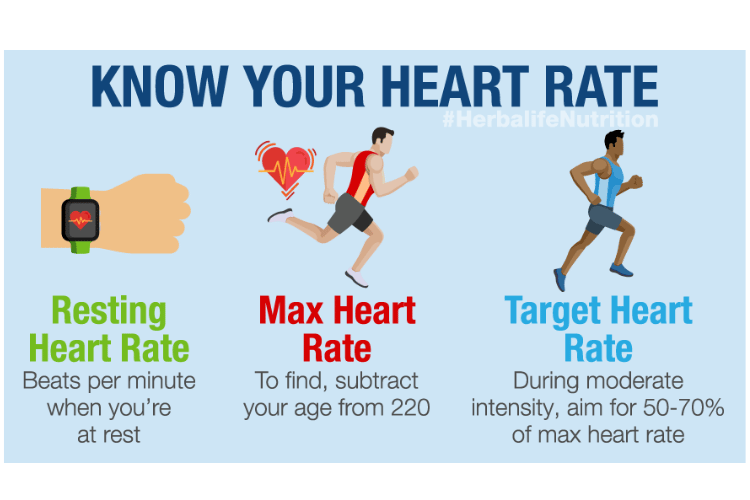
When to Check Your Heart Rate
- At Rest:
- Measure your resting heart rate in the morning before getting out of bed. This provides a baseline for your heart's activity when your body is at its most relaxed state.
- During Exercise:
- Check your heart rate during physical activity to ensure you are working within your target heart rate zone. This helps optimize your workout intensity and avoid overexertion.
- After Exercise:
- Monitoring your heart rate after exercise can indicate how quickly your heart recovers. A faster recovery rate is often a sign of good cardiovascular fitness.
- When Feeling Unwell:
- If you experience symptoms like dizziness, palpitations, or shortness of breath, checking your heart rate can provide valuable information for identifying potential issues.
- Regular Intervals:
- For individuals with heart conditions or those at risk, regular heart rate monitoring can help detect abnormalities early and guide treatment decisions.
Understanding Your Heart Rhythm
Your heart rhythm refers to the pattern and timing of your heartbeats, which are controlled by electrical signals traveling through the heart. A steady and regular rhythm ensures that blood is efficiently pumped to the rest of the body, delivering oxygen and nutrients to vital organs. Any disruption in this rhythm can affect overall health, making it essential to understand its significance and recognize potential irregularities.Importance of Heart Rhythm in Overall Health
A healthy heart rhythm is crucial for maintaining proper circulation and supporting the body's functions. The heart's electrical system ensures that the atria and ventricles contract in a coordinated manner, allowing blood to flow seamlessly through the heart and into the body. When the heart rhythm is regular, the body receives a consistent supply of oxygen-rich blood, which is vital for energy production, brain function, and organ health. However, irregularities in the rhythm, such as a heart that beats too fast, too slow, or erratically, can disrupt this balance. Over time, these disruptions may lead to complications like fatigue, dizziness, shortness of breath, or even more severe conditions such as stroke or heart failure. Monitoring your heart rhythm and understanding its role in overall health can help you take proactive steps to maintain cardiovascular wellness and detect potential issues early.Common Heart Rhythm Irregularities
Heart rhythm irregularities, also known as arrhythmias, occur when the electrical signals that regulate the heartbeat are disrupted. These irregularities can range from harmless to life-threatening, depending on their type and severity. Some of the most common arrhythmias include:- Atrial Fibrillation (AFib):
- AFib is characterized by a rapid and irregular heartbeat originating in the atria. It can cause symptoms like palpitations, fatigue, and shortness of breath. If left untreated, AFib increases the risk of stroke and other complications.
- Bradycardia:
- Bradycardia refers to a slow heart rate, typically below 60 beats per minute. While it may be normal for athletes, in others, it can indicate issues with the heart's electrical system or the effects of certain medications.
- Tachycardia:
- Tachycardia is a fast heart rate, usually over 100 beats per minute. It can occur in the atria (supraventricular tachycardia) or ventricles (ventricular tachycardia) and may cause symptoms like dizziness, chest pain, or fainting.
- Ventricular Fibrillation (VFib):
- VFib is a life-threatening arrhythmia where the ventricles quiver instead of pumping blood. It requires immediate medical intervention, such as defibrillation, to restore a normal rhythm.
- Premature Heartbeats:
- Premature atrial or ventricular contractions are extra beats that disrupt the heart's regular rhythm. While often harmless, frequent occurrences may require evaluation to rule out underlying conditions.
When to Seek Medical Advice
It’s important to know when to consult a healthcare provider about your heart rhythm. While occasional irregularities may not be a cause for concern, certain symptoms or patterns warrant medical attention.- Persistent Symptoms: If you experience ongoing symptoms such as palpitations, dizziness, fatigue, or shortness of breath, it’s essential to have your heart rhythm evaluated.
- Chest Pain or Discomfort: Any chest pain, especially if accompanied by shortness of breath or nausea, should be treated as a medical emergency.
- Fainting or Near-Fainting Episodes: Sudden loss of consciousness or feeling lightheaded may indicate a serious arrhythmia that requires immediate care.
- Rapid or Slow Heart Rate: A heart rate consistently above 100 beats per minute (tachycardia) or below 60 beats per minute (bradycardia) without an obvious cause, such as exercise or rest, should be assessed by a doctor.
- Family History of Arrhythmias: If you have a family history of heart rhythm disorders or sudden cardiac death, regular check-ups can help identify potential risks early.
Frequently Asked Questions
Q: What is the difference between heart rate and pulse?
A: Heart rate refers to the number of times your heart beats in one minute, while pulse is the physical sensation of the heartbeat as it travels through the arteries. Although they are closely related, they may differ in certain medical conditions, such as arrhythmias or very low blood pressure, where the heart rate may not always produce a detectable pulse.
Q: How do you measure your heart rate?
A: You can measure your heart rate by locating your pulse at major arteries, such as the radial artery on your wrist. Place your index and middle fingers on the artery, count the number of beats you feel in 15 seconds, and multiply that number by four to calculate your heart rate in beats per minute (bpm).
Q: What is a normal resting heart rate?
A: A normal resting heart rate for most adults ranges from 60 to 100 beats per minute. However, athletes or individuals with high cardiovascular fitness may have a lower resting heart rate, sometimes as low as 40 bpm. Factors like stress, illness, or heart conditions can cause deviations from this range.
Q: How can I find my pulse?
A: To find your pulse, gently press your index and middle fingers on areas where arteries are close to the skin, such as the inside of your wrist (radial artery) or the side of your neck (carotid artery). Apply light pressure until you feel the rhythmic beats of your pulse.
Q: What factors can affect your heart rate?
A: Heart rate can be influenced by various factors, including physical activity, stress, medications, and overall health. For example, exercise temporarily raises your heart rate, while relaxation or sleep lowers it. Conditions like bradycardia (slow heart rate) or tachycardia (fast heart rate) can also cause irregularities.
Q: What is target heart rate and how do I find it?
A: Target heart rate is the optimal range your heart should reach during exercise to maximize cardiovascular benefits. To calculate it, subtract your age from 220 to find your maximum heart rate. Then, aim for 50-85% of that number during physical activity to stay within your target range.
Q: Why is it important to check your pulse regularly?
A: Regularly checking your pulse helps you monitor your heart health and detect any irregularities early. Significant changes in your pulse rate or irregular rhythms can signal potential heart problems, allowing you to seek timely medical advice and prevent complications.
Q: What are the signs of an irregular heart rhythm?
A: Signs of an irregular heart rhythm, or arrhythmia, may include palpitations, dizziness, fatigue, or shortness of breath. If your heart rate feels erratic, consistently too fast, or too slow, it’s important to consult a healthcare professional to rule out serious conditions and receive appropriate care.
Conclusion
Understanding the distinction between pulse and heart rate can provide valuable insights into your cardiovascular health. While they are closely related, knowing how to measure and interpret each can help you monitor your fitness, detect potential issues, and maintain a healthy lifestyle. Stay informed and take charge of your heart health!



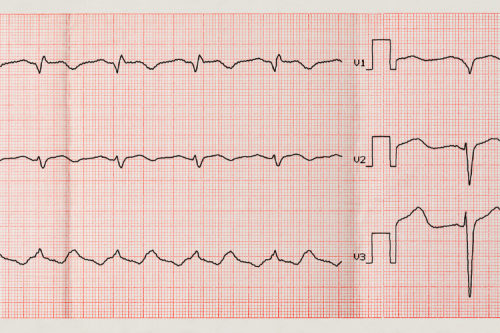

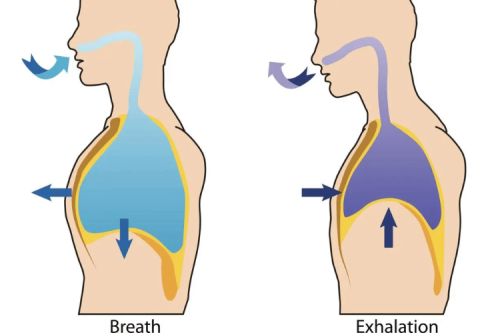


 Login with Google
Login with Google Login with Facebook
Login with Facebook